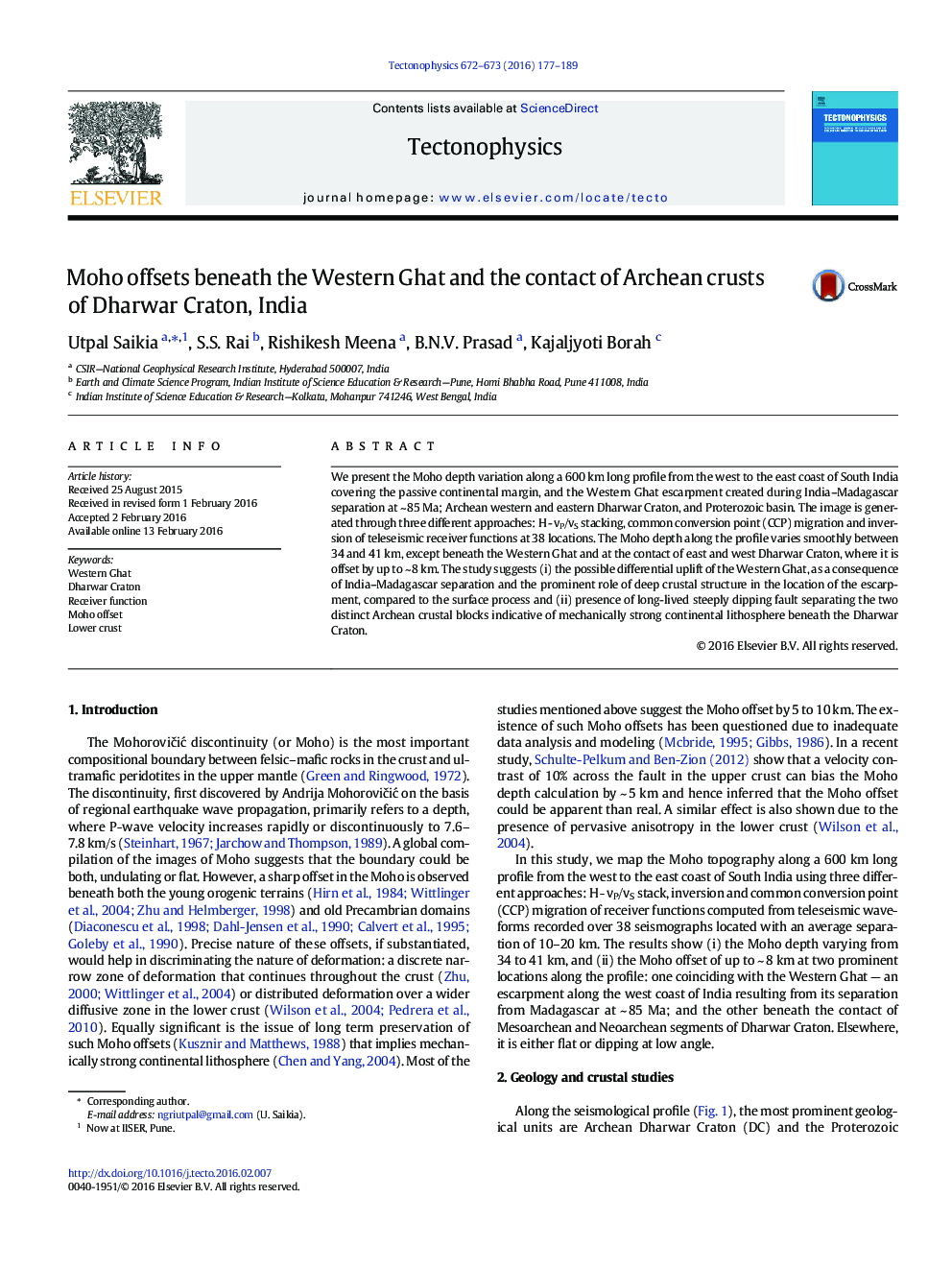| کد مقاله | کد نشریه | سال انتشار | مقاله انگلیسی | نسخه تمام متن |
|---|---|---|---|---|
| 4691395 | 1636724 | 2016 | 13 صفحه PDF | دانلود رایگان |

• Crustal thickness varies across the craton between 34 and 41 km.
• Moho offset is observed in the vicinity of either the major geological boundaries or the shear zones.
• The absence of thinning crust is probably due to India–Madagascar rifting and possibility of magma underplating.
We present the Moho depth variation along a 600 km long profile from the west to the east coast of South India covering the passive continental margin, and the Western Ghat escarpment created during India–Madagascar separation at ~ 85 Ma; Archean western and eastern Dharwar Craton, and Proterozoic basin. The image is generated through three different approaches: H - vP/vS stacking, common conversion point (CCP) migration and inversion of teleseismic receiver functions at 38 locations. The Moho depth along the profile varies smoothly between 34 and 41 km, except beneath the Western Ghat and at the contact of east and west Dharwar Craton, where it is offset by up to ~ 8 km. The study suggests (i) the possible differential uplift of the Western Ghat, as a consequence of India–Madagascar separation and the prominent role of deep crustal structure in the location of the escarpment, compared to the surface process and (ii) presence of long-lived steeply dipping fault separating the two distinct Archean crustal blocks indicative of mechanically strong continental lithosphere beneath the Dharwar Craton.
Journal: Tectonophysics - Volumes 672–673, 16 March 2016, Pages 177–189